Available 24/7
Available 24/7
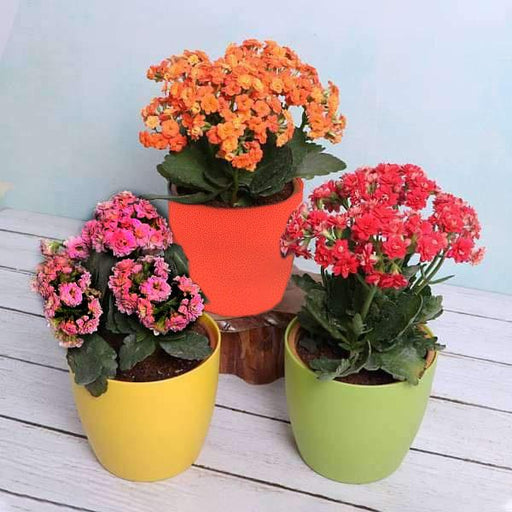
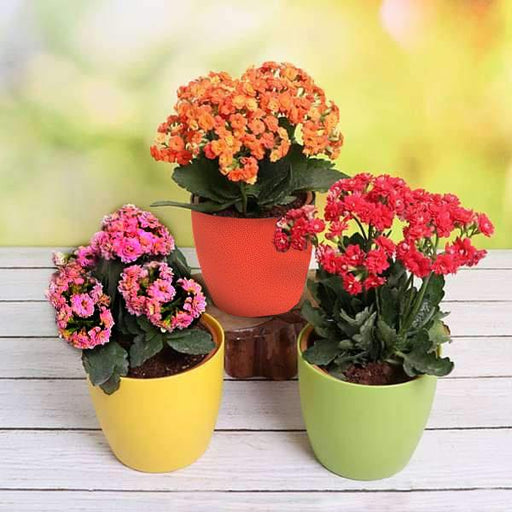 Save 10%
Save 10%
DescriptionThe Kalanchoes are thick leaved elegant flowering succulent houseplants. Make your home garden more vibrant and full of colors by bringi...
View full details Save 18%
Save 18%
DescriptionThis pack contains two 60 cm Spiral Stick Lucky Bamboo Plant + Glass vase + 250g white chip pebbels + 250g black chip pebbels.About Luc...
View full details

DescriptionIf the juvenile foliage along with a more compact plant is preferred, cut off all the climbing stems that develop, this will keep it bus...
View full details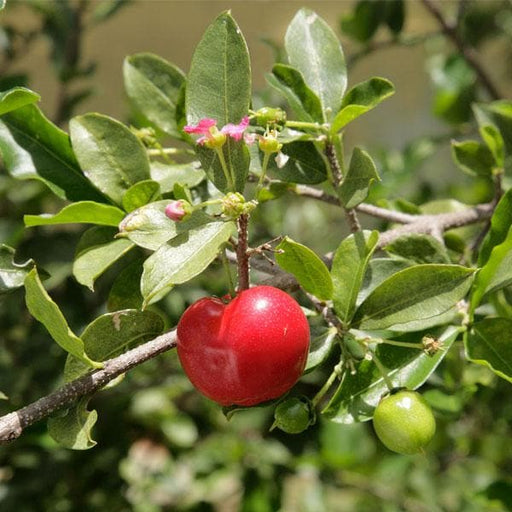 Save 15%
Save 15%
DescriptionGrowing Barbados Cherry is an easy way to add a tropical flair to your garden. When you know its important and how to care for Barbados ...
View full details Save 17%
Save 17%
DescriptionImprove immunity of your all family member by growing a nutritious and vitamin rich an amazing Amla plant. Amla is a small to the medium...
View full details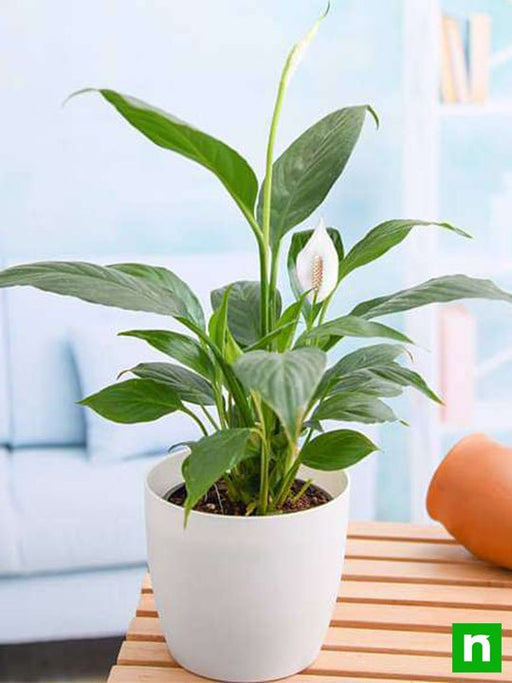
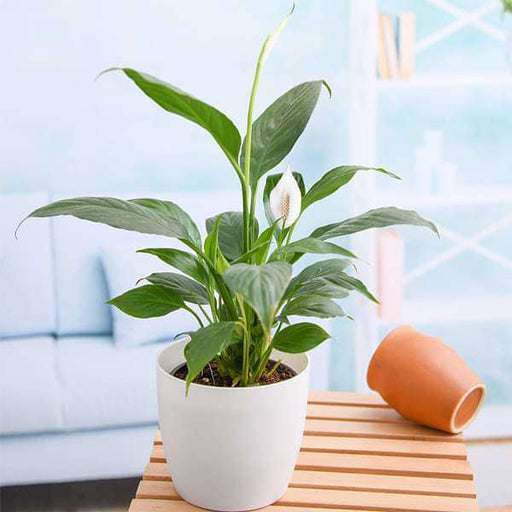 Save up to 15%
Save up to 15%
DescriptionPeace Lily Plant is a very popular and very rare indoor flowering houseplant. It is also an excellent air purifier plant.What makes it s...
View full details
 Save 20%
Save 20%
DescriptionFlowers make intimate connections they increase our connectivity with family and friends. Mogra plant is famously known as Jasmine flowe...
View full details
 Save 10%
Save 10%
DescriptionThe Kalanchoes are thick leaved elegant flowering succulent houseplants. Make your home garden more vibrant and full of colors by bringi...
View full details Save 45%
Save 45%
Description Pack of 4 succulents that are very easy to care for. A perfect pack to start growing plants worry-free. About You get 4 succulent plant...
View full details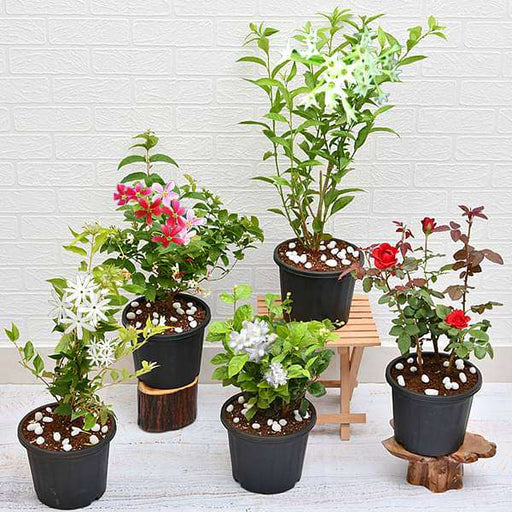 Save 12%
Save 12%
DescriptionAromatic plants bring into a room or house an often overlooked benefit. These plants have a pleasant scent.About You plant a hope when ...
View full details
 Save up to 50%
Save up to 50%
DescriptionIf you long for indoor greenery but have not succeeded with houseplants, consider these beautiful succulents. A perfect pack to start gr...
View full details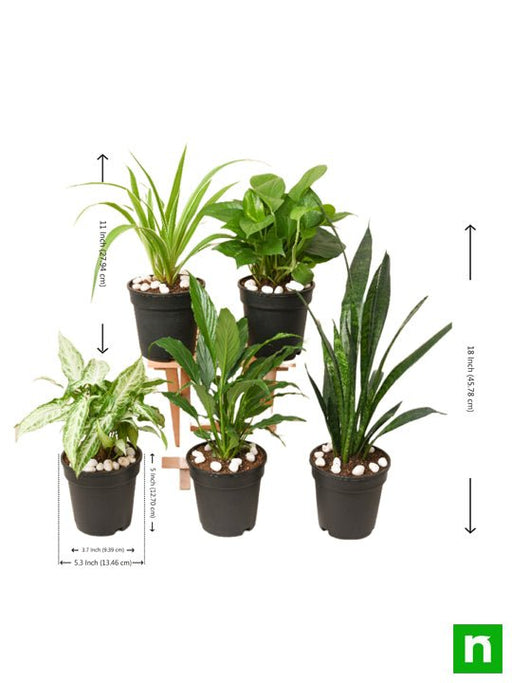
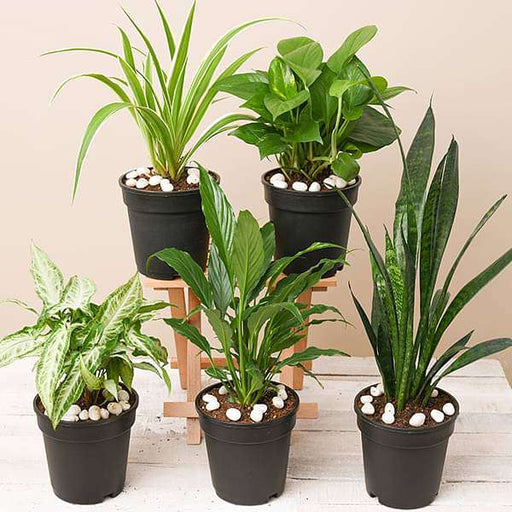 Save 21%
Save 21%
DescriptionThis plants pack contains amazing 5 houseplants + 5 Pots. Surround your home with these best pollution killer plants for a clean and hea...
View full details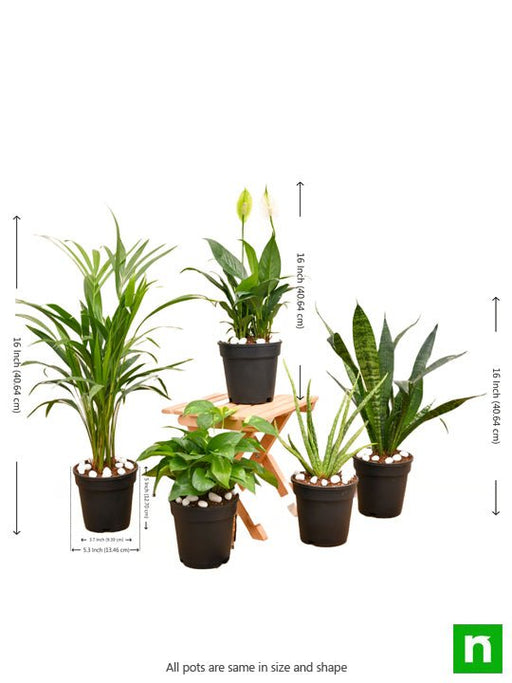
 Save 20%
Save 20%
DescriptionIf you or anyone from your family wants to breathe fresh air, cleaner air in their homes, this 5 plants pack purify the air around and r...
View full details
 Save 40%
Save 40%
DescriptionSet of 2 Bonsai Looking Grafted Adenium PlantsAbout You get 2 Bonsai looking hardy grafted Adenium plants in a single pack.Plants are k...
View full detailsPeace Lily Plants is one subject that has been written about for years, with an emphasis on its exotic flowers. This plant prefers a sunny location in a shaded area-a window facing east or south is often the right choice. This plant is excellent for gardening beginners. Peace lily is also known for its air purifying qualities.
The Genus Spathiphyllum is, in fact, a large family of around 47 varieties of monostyla flowering plants native to the warm regions of central and southern America and adjacent Asia.
This plant has a fleshy taproot, a pair of pointed ovate leaves, and many white hairs on its leaves’ undersides. This plant has air purifying abilities can be a perfect addition to your work table plants. The peace lily is ideal for gifting too.
When taking care of Peace Lily plants, you will have to give them a fair amount of space-more than half the plant's total height should be allowed for mature growth; otherwise, the roots may contract and cause the plant to wither prematurely.
Peace Lily plants are a favourite among gardeners because of their versatility and easy maintenance, with its unparalleled features, such as -
Why choose NurseryLive?
Peace Lily plants bloom with attractive flowers of white in colour.
If you want to improve your landscape and get the best value for the money you have been dreaming of, consider picking your favourite Peace Lily plants from Nurserylive's online site. And the best varieties to choose!
Peace lily plants are popular indoor plants that are known for their beautiful foliage and white blooms. Proper care is essential for their growth and long-term health. From watering to pruning, understanding the basics of peace lily plant care can help you keep your plants happy and healthy.
Propagating peace lily plants is an excellent way to expand your plant collection and share your love for these beautiful plants with others. Whether you prefer division or stem cuttings, learning about the different propagation methods can help you propagate your peace lily plants successfully.
Peace lily plants are susceptible to several diseases, including root rot, leaf spot, and powdery mildew. Understanding the common peace lily plant diseases and their symptoms can help you prevent and treat them before they cause serious damage to your plants.
Pests such as spider mites, mealybugs, and scale insects can damage your peace lily plants and affect their growth and health. Learning about the common peace lily plant pests and their control methods can help you keep your plants pest-free and thriving.
Peace lily plants require adequate watering to thrive, but overwatering or underwatering can be harmful to their growth and health. Learning about the right watering techniques and frequency can help you keep your peace lily plants healthy and beautiful.
Fertilizing peace lily plants can help promote healthy growth and beautiful blooms. Understanding the right type of fertilizer, timing, and frequency can help you provide the best nutrition for your peace lily plants.
Peace lily plants thrive in medium to low light conditions, making them an excellent choice for indoor spaces. However, understanding their light requirements can help you provide the best growing environment for your plants.
Choosing the right soil for your peace lily plants is essential for their growth and health. A well-draining soil mix that is rich in organic matter can provide the right nutrients and moisture for your plants.
Repotting your peace lily plants is necessary when they outgrow their current container or when their soil becomes depleted. Learning about the right time, method, and soil mix for repotting can help you keep your peace lily plants healthy and thriving.
Peace lily plants produce beautiful white blooms that can last for several weeks. Understanding their blooming habits and requirements can help you enjoy their beauty and fragrance for longer periods.
Peace lily plants are known for their air purification properties, which can help remove toxins and pollutants from indoor spaces. Learning about their air-purifying abilities and requirements can help you create a healthier living environment for you and your family.
Peace lily plants prefer moderate temperatures and can be sensitive to extreme heat or cold. Understanding their temperature requirements can help you provide the best growing environment for your plants.
Peace lily plants thrive in humid environments, but excessive humidity can lead to fungal growth and other problems. Learning about their humidity requirements can help you provide the right growing conditions for your plants.
Pruning peace lily plants is necessary to maintain their shape and promote healthy growth. Learning about the right pruning techniques and timing can help you keep your peace lily plants looking beautiful and healthy.
Peace lily plants are toxic to pets and humans if ingested. Learning about their toxicity and symptoms can help you prevent accidental poisoning and keep your loved ones safe.
Choosing the right placement for your peace lily plants is essential for their growth and health. Understanding their light and temperature requirements can help you find the best spot for your plants to thrive.
Peace lily plants come in different varieties, each with unique characteristics and growing requirements. Learning about the different peace lily plant varieties can help you choose the best plant for your home or office.
Peace lily plants offer several benefits, including air purification, stress reduction, and aesthetic appeal. Understanding their benefits and how they can improve your living environment can help you appreciate and enjoy your peace lily plants even more.
Peace lily plants are often associated with peace, harmony, and tranquility. Learning about their symbolism and cultural significance can add a deeper meaning to your plant collection and enrich your life.
Peace lily plants make great gifts for friends, family, and colleagues. They are easy to care for, have beautiful blooms, and offer several benefits. Learning about the different ways to give peace lily plants as gifts can help you spread joy and positivity to those around you.
The peace lily plant, also known as Spathiphyllum, is a popular indoor plant with broad, glossy green leaves and white or yellow flowers.
Caring for a peace lily plant involves providing it with bright, indirect light, regular watering, and occasional fertilization. It's also important to keep the plant away from cold drafts and to remove any dead or yellowing leaves.
Peace lily plants are typically grown indoors, but they can be grown outdoors in warm, humid climates.
Peace lily plants should be watered when the top inch of soil feels dry. It's important not to overwater the plant, as this can lead to root rot.
Fertilizing a peace lily plant involves using a balanced, water-soluble fertilizer every two to three months during the growing season.
Repotting a peace lily plant involves gently removing the plant from its current pot, loosening the root ball, and replanting it in a larger pot with fresh potting soil.
Propagating a peace lily plant involves dividing the plant at the root ball and replanting the divisions in fresh potting soil.
Peace lily plants help to purify the air and improve indoor air quality. They also provide a calming, decorative touch to any room.
Preventing pests and diseases in your peace lily plant involves proper care and maintenance, including regular watering, fertilizing, and pruning. You can also use organic or chemical treatments to prevent and control pests and diseases.
Common pests include spider mites and mealybugs, while common diseases include root rot and leaf spot.
Cleaning the leaves of your peace lily plant involves wiping them down with a damp cloth or misting them with water. This helps to remove dust and debris and keeps the leaves looking shiny and healthy.
Yes, peace lily plants make great gifts for any occasion. They are easy to care for and provide a lasting, decorative touch to any home or office.
A peace lily plant needs to be repotted when its roots become overcrowded in the pot or when the soil dries out too quickly.
When choosing a pot for your peace lily plant, consider factors such as the size of the plant, the size of the root ball, and the type of potting soil. The pot should have drainage holes to prevent overwatering.
Pruning a peace lily plant involves removing dead or yellowing leaves and cutting back any overgrown stems. This helps to promote healthy growth and keeps the plant looking neat and tidy.
Encouraging a peace lily plant to bloom involves providing it with bright, indirect light and regular fertilization. It's also important to keep the plant away from cold drafts and to ensure proper watering.
Troubleshooting problems with your peace lily plant involves identifying the issue, researching potential causes, and implementing appropriate solutions such as adjusting watering and lighting, or using organic or chemical treatments.
When looking for a reputable peace lily plant supplier, consider factors such as their selection of plants, their experience and expertise, and their customer reviews and testimonials. You should also check if they are certified and licensed by local authorities. At NurseryLive, we offer a wide selection of high-quality peace lily plants and our team of experts is available to answer any questions you may have.
Preventing your peace lily plant from wilting involves providing it with regular, consistent watering and avoiding overwatering or underwatering.
Propagating your peace lily plant from cuttings involves taking a stem cutting with at least two leaves and rooting it in water or potting soil.
Peace lily plants prefer bright, indirect light and should not be placed in direct sunlight as this can scorch the leaves.
Preventing your peace lily plant from becoming root-bound involves repotting it when the roots become overcrowded or the plant outgrows its current pot.
Yes, tap water can be used to water your peace lily plant, but it's important to let it sit for a few hours to allow any chlorine to dissipate.
You can tell if your peace lily plant needs more or less water by checking the soil moisture level. If the top inch of soil feels dry, the plant likely needs water. If the soil feels wet, the plant may be overwatered.
Peace lily plants may not require fertilization during the winter months when their growth rate slows down.
Keeping your peace lily plant from becoming too leggy involves providing it with adequate light and regular pruning to promote bushier growth.
Yes, peace lily plants are known for their air-purifying properties and can help to remove pollutants from indoor air.
Preventing your peace lily plant from getting too tall involves regular pruning and maintaining adequate light levels to promote compact growth.
Yes, peace lily plants can be grown hydroponically as long as they receive proper nutrients and lighting.
It's time to repot your peace lily plant when its roots become overcrowded in the pot, or when the soil dries out too quickly. Signs that your peace lily plant needs repotting include roots growing out of the bottom of the pot or water draining too quickly through the soil.